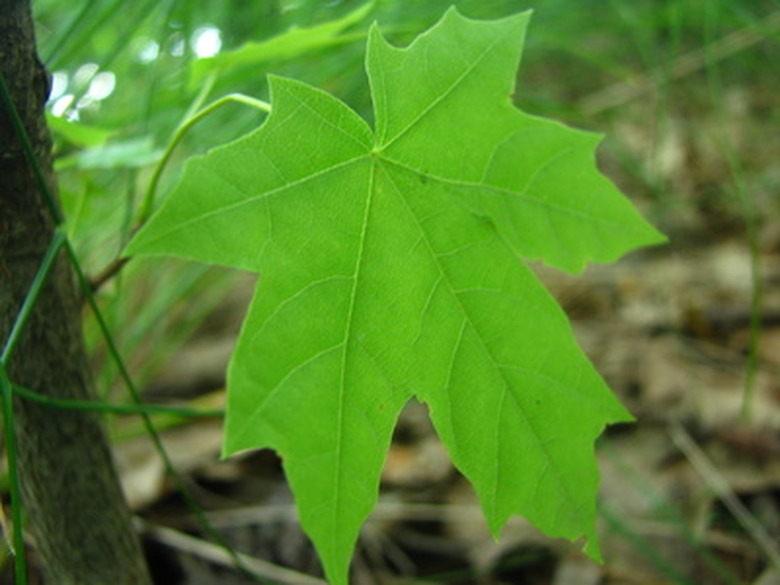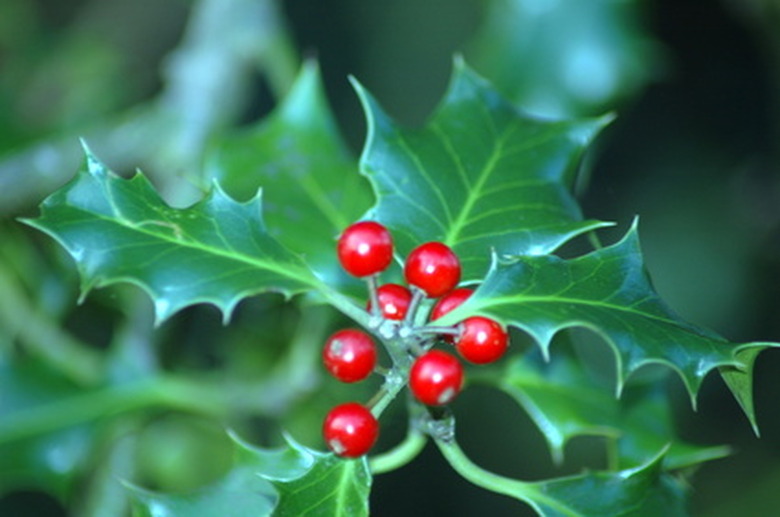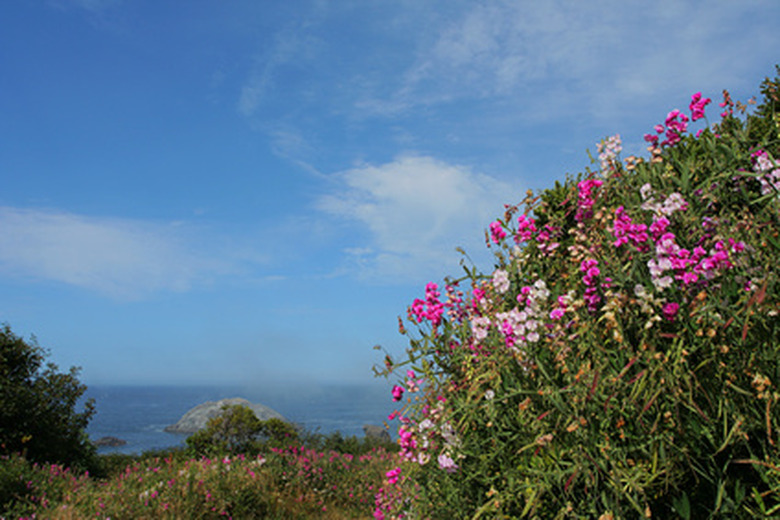Plants That Live In A Continental Climate
Continental climates are found mostly in the interior areas of large continents. Summer temperatures are usually 65 to 90 degrees F, and winter temperatures are commonly 10 to 45 degrees F during the day, dipping down to -10 to 25 degrees F at night. Plants growing in this climate have adapted to this yearly extreme in temperatures. Annual precipitation in the form of rain and snow reach 24 to 48 inches. This gives plants an adequate amount of moisture. Areas with continental climates include the Midwest and northeast of the United States, southern Canada, parts of China and most of Russia.
Bigleaf Maple
Bigleaf maple (Acer macrophyllum) is a deciduous tree growing 40 to 100 feet tall. The bark of the bigleaf maple is dark brown with ridges running up and down the tree. The leaves are 6 to 12 inches across, with five fingers. The leaves are dark green on top and paler on the bottom. When picked, the leaves leak a milky liquid. Small yellow blossoms cluster together, forming draping groups. The seeds are double-winged and turn a tan color when ripe. Bigleaf maple prefers moist, good-draining soil.
- Continental climates are found mostly in the interior areas of large continents.
- The bark of the bigleaf maple is dark brown with ridges running up and down the tree.
English Holly
English holly (Ilex aquifolium) is an evergreen tree with a pyramid shape. This slow-growing tree reaches 50 feet in height and spreads 15 feet wide. The 1- to 3-inch dark green leaves have wavy edges and spines. Some varieties have green and cream variegated leaves. English holly produces red, yellow and orange berries that stay on the tree all winter long. English holly prefers sun to partial shade exposure and good-draining soil. This tree does not tolerate high humidity or heat.
- English holly (Ilex aquifolium) is an evergreen tree with a pyramid shape.
- English holly produces red, yellow and orange berries that stay on the tree all winter long.
Everlasting Pea
Everlasting pea (Lathyrus latifolius) is a perennial flower with sprawling stems reaching 7 feet long. Oval-shaped green leaves grow along the stems. This pea plant develops tendrils along the leaves and climbs up supports. Clusters of purplish-pink or white, odorless flowers bloom from May until September. Everlasting pea tolerates poor soil, and is found growing in waste areas and in ditches along roads.
Wild Ginger
Wild ginger (Asarum canadense) is a slow-growing evergreen plant reaching 6 to 12 inches tall. The velvety green, heart-shaped leaves are 3 to 6 inches across. Purple-brown, cup-shaped flowers appear in the spring. Wild ginger is a native woodland groundcover that prefers partial to fall shady conditions. Plant this perennial in moist, rich soil that drains well.
- Everlasting pea (Lathyrus latifolius) is a perennial flower with sprawling stems reaching 7 feet long.
- Everlasting pea tolerates poor soil, and is found growing in waste areas and in ditches along roads.



